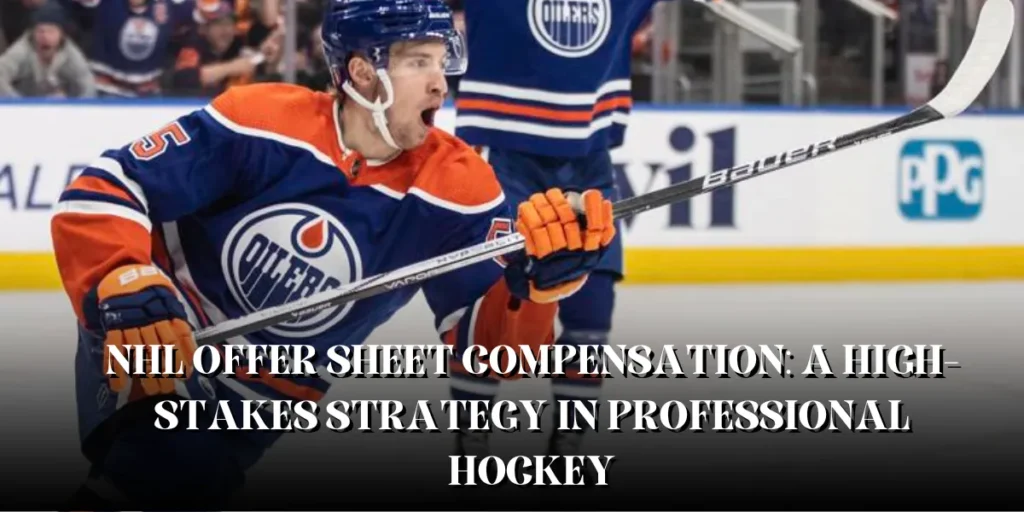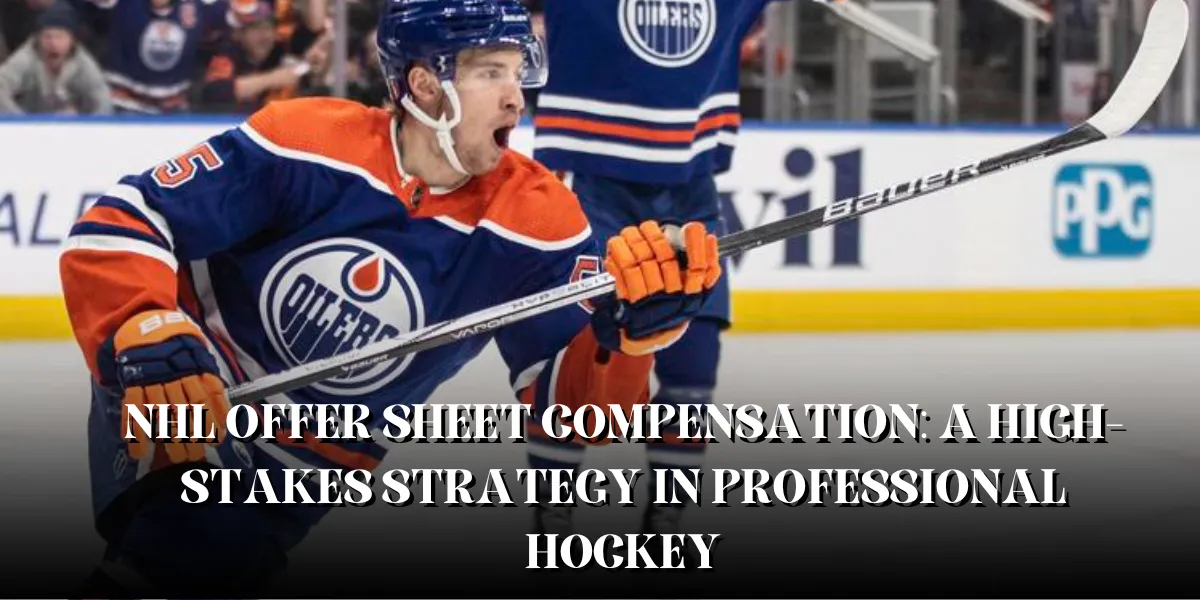
NHL Offer Sheet Compensation: A High-Stakes Strategy in Professional Hockey
In the high-stakes world of professional hockey, NHL offer sheets represent one of the most intriguing and potentially game-changing strategies in the sport. This mechanism, which allows a team to attempt to acquire a restricted free agent (RFA) from another team, comes with significant risks and rewards. The original team has the right to match the offer and retain the player, or they can decline the offer, resulting in a compensation package involving valuable draft picks. Understanding the intricacies of this process is crucial for teams, players, and fans alike.
Understanding the NHL Offer Sheet
An NHL offer sheet is a formal contract proposal that one team presents to an RFA who is currently under contract with another team. What makes the offer sheet unique is that it bypasses the typical negotiation process. Normally, an RFA can only negotiate with their current team or accept the qualifying offer extended by them. However, with an offer sheet, another team can directly propose a contract to the player, putting the original team in a difficult position.
Once the offer sheet is signed by the player, the original team has seven days to match the terms of the contract. If they choose to match, the player remains with the original team under the terms of the new contract. If they decline, the player joins the new team, and the original team receives compensation in the form of draft picks, the value of which is determined by the annual average value (AAV) of the offer sheet.
The High Stakes of NHL Offer Sheets
The decision to issue or respond to an offer sheet is fraught with tension and uncertainty. For the team extending the offer, the potential to acquire a star player who can elevate their roster is immensely appealing. However, this comes with the risk of losing significant future assets in the form of draft picks, which could hamper the team’s long-term success.
For the original team, the stakes are equally high. Matching an offer sheet can mean securing a key player but often at a cost that may strain the team’s salary cap. Declining the offer might bring a substantial compensation package, but it also means losing a player who could be central to the team’s success.
The dynamics of offer sheets are further complicated by the relationships between teams. An offer sheet can create animosity, especially if it is perceived as an aggressive move by the offering team. This tension can affect future trade negotiations and other interactions between the teams involved.
The NHL Offer Sheet Compensation Structure
The NHL’s compensation structure for offer sheets is meticulously designed to prevent teams from making frivolous or overly aggressive moves. Compensation is tied directly to the AAV of the offer sheet, with higher AAVs triggering more substantial compensation.
Low-Tier Compensation
For offer sheets with an AAV below a certain threshold, there is no compensation required. These offer sheets are typically for players who are not considered elite but still have potential to contribute to a team’s success. This lack of compensation can make low-tier offer sheets a more attractive option for teams looking to add depth without sacrificing future draft assets.
Mid-Tier Compensation
When the AAV of an offer sheet falls within a mid-range, the compensation involves the loss of one or more draft picks. The exact number and round of the picks depend on the specific AAV. This tier of offer sheets is often used for players who are considered strong contributors but not necessarily franchise-altering talents. The risk here is balanced; the offering team gains a solid player but must weigh that against the loss of potentially valuable draft picks.
High-Tier Compensation
The most lucrative and, consequently, the riskiest offer sheets fall into the high-tier category. These offer sheets, typically made to superstar players, come with compensation that includes multiple first-round draft picks. This is where the stakes are highest for both teams. For the offering team, the chance to secure a franchise player is tantalizing, but the cost is steep. For the original team, declining the offer means losing a star but gaining a significant haul of draft picks that could shape the team’s future for years.
The Strategic Impact of NHL Offer Sheets
The strategic use of offer sheets can have a ripple effect throughout the NHL. When a team successfully signs an RFA via an offer sheet, it can shift the balance of power in the league. A key player moving to a new team can disrupt rivalries, alter playoff dynamics, and even influence other teams’ strategies in free agency and the trade market.
Historical Impact of Offer Sheets
Historically, offer sheets have been rare but memorable. One of the most significant examples occurred in 1997 when the Philadelphia Flyers signed Chris Gratton to a five-year, $16.5 million offer sheet. The Tampa Bay Lightning chose not to match, and Philadelphia had to surrender four first-round draft picks as compensation. This move had long-term implications for both franchises, highlighting the risks involved in such transactions.
More recently, in 2019, the Montreal Canadiens made headlines by extending an offer sheet to Sebastian Aho of the Carolina Hurricanes. The deal was worth $42.27 million over five years. Carolina matched the offer, retaining Aho, but the move was seen as a bold statement by Montreal, showcasing the strategic use of offer sheets in modern NHL.
Why Teams Might Hesitate
Despite the potential benefits, many teams are cautious about using offer sheets. The compensation structure is a significant deterrent, as losing high draft picks can be devastating to a team’s future. Additionally, the risk of alienating other teams or creating an adversarial relationship within the league is a factor that general managers must consider.
Moreover, the player involved in an offer sheet often feels pressure. If their current team matches the offer, they may feel unwelcome or undervalued, knowing another team valued them more highly. This dynamic can affect locker room morale and the player’s performance.
The Future of NHL Offer Sheets
As the NHL continues to evolve, so too will the use of offer sheets. The league’s salary cap structure, changes in team management philosophies, and the increasing value of draft picks will all influence how teams approach this strategic tool.
Teams with deep pockets and a willingness to take risks may continue to explore offer sheets as a way to quickly enhance their rosters. However, the high cost and potential for long-term consequences will likely keep offer sheets as a rare but impactful element of NHL strategy.
The potential for an offer sheet to reshape the future of a franchise cannot be understated. Whether teams use them as a last resort or as a calculated risk, offer sheets will remain one of the most fascinating aspects of the NHL’s offseason drama.

